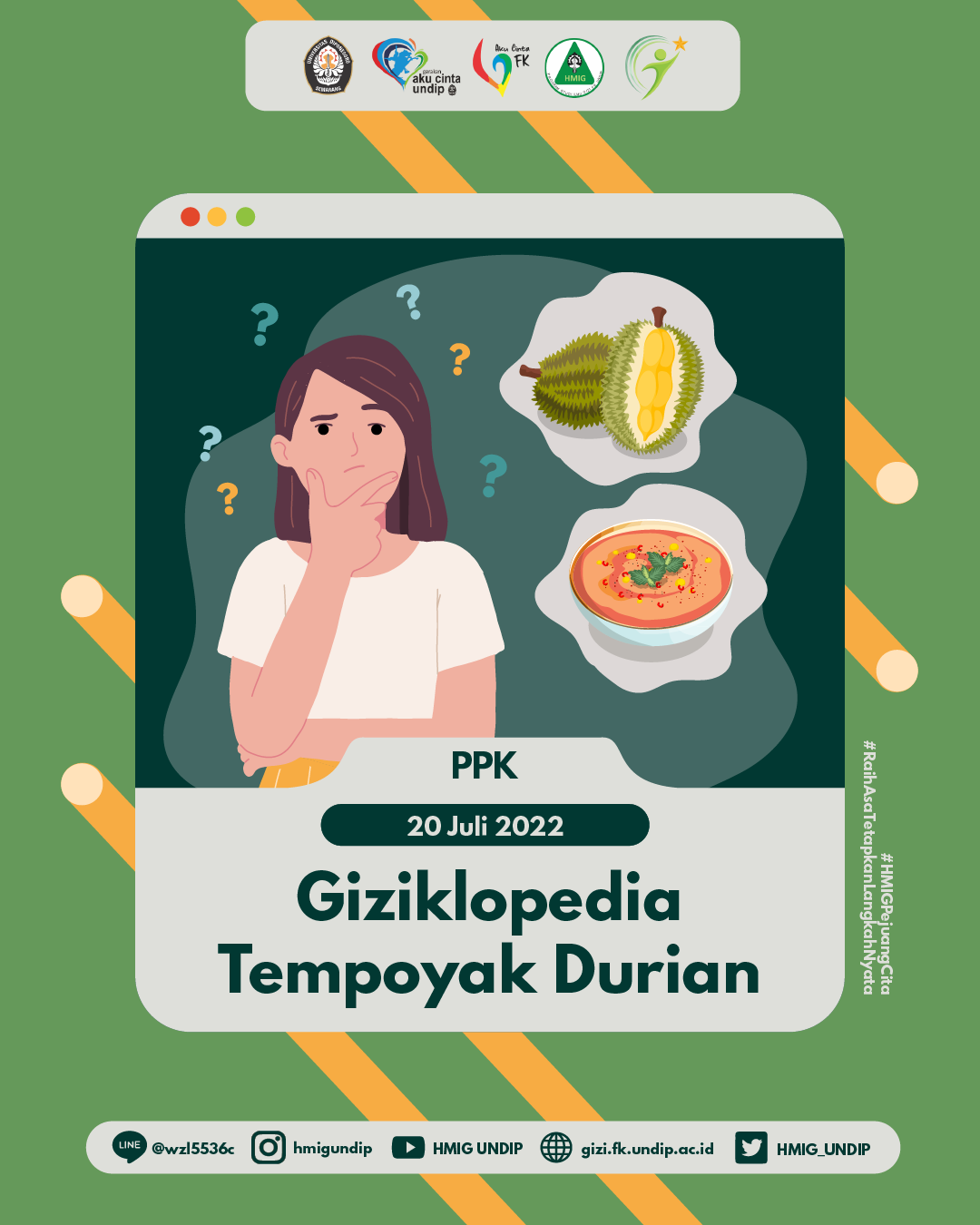Tempoyak with Unique Taste and Various Benefits
Hello Nutrilicious!
Meet again with Giziklopedia in July.
So, on this occasion, what are we talking about?
Well, this time Giziklopedia will discuss Indonesian specialties, namely Tempoyak.
You must be curious about what Tempoyak is.
If so, let’s just look at the explanation!
Tempoyak is a processed product of durian fruit flesh involving lactic acid bacteria (BAL) with the addition of a small amount of salt or often known as a spontaneous fermentation process.1 Tempoyak is a traditional food that is widely consumed by Malays living in Southeast Asia, especially in Indonesia and Malaysia. In Indonesia, Tempoyak is usually better known by the people of Southern Sumatra, namely Jambi, Lampung, and Palembang. In addition, Tempoyak is also known in the areas of West Kalimantan and Aceh.2,3
Tempoyak consumption is usually eaten as an accompaniment to rice and also as a seasoning to make other types of food. Types of food with processed Tempoyak such as sambal Tempoyak and Brengkes are traditional dishes originating from Sumatra. Sambal Tempoyak is often consumed as daily food or during celebrations in the custom of marriage or circumcision, while Brengkes has the meaning of Pepes, namely processing by steaming. Brengkes is a traditional food with a combination of catfish and durian along with spices with a sour, savory, and spicy taste.2,4
As previously known, Tempoyak is the result of the fermentation of durian meat and involves lactic acid bacteria in the manufacturing process. However, Tempoyak making has different recipes that are unique according to the region. Tempoyak from Sumatra and Kalimantan has a slight difference in the recipe, namely in Tempoyak from Sumatra, salt is added, while Tempoyak from Kalimantan is added with salt and sugar. Tempoyak can be made by spontaneous fermentation or using yeast, but the majority of people still use spontaneous fermentation in its manufacture.4 Spontaneous fermentation can occur for 2-7 days and will make the durian fruit flesh change from a dense mass to a semisolid with a strong sour aroma.2
The Tempoyak fermentation process is carried out by the activity of lactic acid bacteria (BAL) so that it is included in lactic acid fermentation or anaerobic fermentation. BAL makes the carbohydrates in durian meat overhauled into glucose, then BAL will ferment glucose and produce lactic acid as the main product, ethanol, and CO2 as its by-products. The quality of Tempoyak is influenced by biochemical reactions during the fermentation process. BAL if in excess amount will reduce the quality of the tempoyak because it can accelerate the fermentation rate. Excess BAL amounts can make the BAL population unbalanced with the available nutrients, so there will be competition between nutrients and make BAL die quickly, and can cause a buildup of metabolites. This will also cause damage and rottenness in the Tempoyak due to the formation of excess alcohol. Therefore, it is necessary to control the availability of BAL at Tempoyak.5
BAL is included in Gram-positive bacteria with a rod or cocus form and can produce lactic acid as the main product in carbohydrate fermentation.5 The content of BAL Tempoyak can inhibit the growth of Staphylococcus aureus bacteria, Listeria monocytogenes bacteria, and Escherichia coli O157 bacteria. Tempoyak has bioactive properties, namely immunostimulator or immunostimulator effects, but this is still being further research related to specific compounds that affect immunostimulants.6
How? Already understand more about Tempoyak? This traditional meal has a unique and interesting taste that you can try. But, we must always remember in consuming it still should not be in excessive amounts yaa because something excessive is not good!

